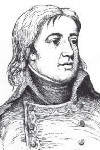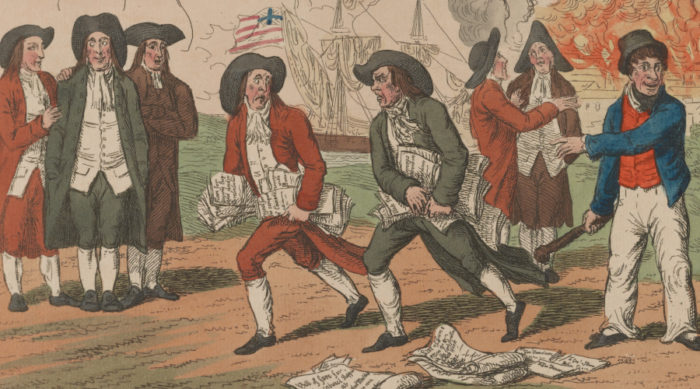
Last week, I properly introduced Michael Shiner, Capitol Hill diarist. Although, as with many aspects of Shiner’s life, it is impossible to say when he wrote down his memories, that which can be confirmed by other sources indicates the accuracy of his memory– down to events that happened when he was quite young.
For instance, the first major historic moment described in Shiner’s diary is the Burning of Washington in 1814. Shiner was not yet ten years old when this horrific event happened, but his description is wide-ranging and accurate – even of those parts to which he was not directly party.
He thus begins with a description of the British army landing east of Washington, and the various attempts by the US military, particularly by the Marines under Commander Barney, to slow down their advance. After a brief clash near Upper Marlboro, US Brigadier General Winder retreated to Long Old Fields and then back to Washington. Similarly, Brigadier General Stanbury, who had been ordered to protect the approach to Bladensburg, decided to retreat into the city as well. Shiner describes these two movements has having been ordered “by the honable Mr James Madoson president of the united staets and the honable sectary of War Mr John arm strong.”
Shiner then describes the burning of the Eastern Branch Bridge and of the Navy Yard itself: “Then they Went forth and burnt the sloop of War on the stocks and one or 2 other vessels and all those orders that Was carid out Wher giv in by the president if the united Staets.”
It is at this point that Shiner’s personal memories come into play:
at sun rise the same morning two men came in on horse back from the direction of Blades Barge [Shiner’s idiosyncratic spelling of Bladensburg] bringing news the Britsh armmy wher advancin over the Baldes Barge Bridge
Commander Barney and his men then advanced to Bladensburg, and “We heard a roar cannonading and Militry” Their efforts were not enough, and soon the US forces had to retreat, followed by the victorious British. Shiner describes what happened next to him:
Jest as We saw the armmy coming above the toll gate in Washington We heard the tread of British army feet Master left a colard man and wher ourselve with a olde lady By the name of Mrs reid on capitol hill then as son as we got a sight of British armmy raising that hill they looked like flames of fier all red coats and the stoks of ther guns painted with red ver Milon [vermillion] and the iron work shind like a spanish dollar the colard man near Mrs reid saw this and My selve and the colard Man started and ran and i started to ran two

Fortunately, the British were not interested in a young boy, and instead concentrated on first the attack coming from the Sewall House northeast of the Capitol, then the burning of the latter as well as the White House – as well as a certain amount of goods owned by merchants of the city that “disapeard out of Washington”
Shiner then writes about the return of the British to their ships, a few small engagements along the way that led to the battle of Fort McHenry in Baltimore a few weeks later.
